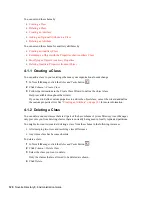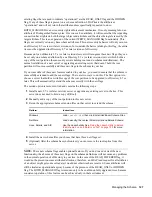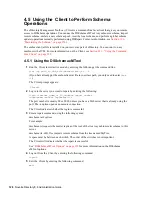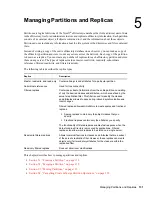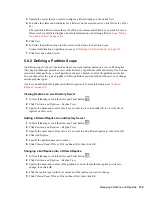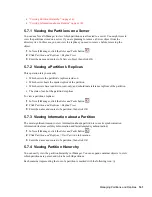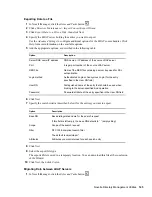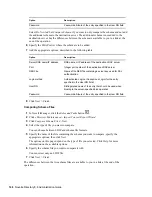
Managing Partitions and Replicas
133
n
ov
do
cx (e
n)
22
Ju
n
e 20
09
Figure 5-2
Before and After a Partition Merge
There are several reasons you might want to merge a partition with its parent:
The directory information in the two partitions is closely related.
You want to delete a subordinate partition, but you don’t want to delete the objects in it.
You’re going to delete the objects in the partition.
You want to delete all replicas of the partition. (Merging a partition with its parent is the only
way to delete the partition’s master replica.)
After moving a container (which must be a partition root with no subordinate partitions), you
don’t want the container to be a partition anymore.
You experience changes in your company organization, so you want to redesign your directory
tree by changing the partition structure.
Consider keeping partitions separate if the partitions are large (contain hundreds of objects), because
large partitions slow down network response time.
The root-most partition in the tree cannot be merged because it is the top partition and has no parent
partition to merge with.
The partition is merged when the process is completed on the servers. The operation could take
some time to complete depending on partition sizes, network traffic, server configuration, etc.
IMPORTANT:
Before merging a partition, check the partition synchronization of both partitions
and fix any errors before proceeding. By fixing the errors, you can isolate problems in the directory
and avoid propagating the errors or creating new ones.
Make sure all servers that have replicas (including subordinate references) of the partition you want
to merge are up before attempting to merge a partition. If a server is down, eDirectory won’t be able
to read the server’s replicas and won’t be able to complete the operation.
If you receive errors in the process of merging a partition, resolve the errors as they appear. Don’t try
to fix the error by continuing to perform operations—doing so only results in more errors.
To merge a child partition with its parent partition:
1
In Novell iManager, click the
Roles and Tasks
button
.
2
Click
Partition and Replicas
>
Merge Partition
.
3
Specify the name and context of the partition you want to merge with its parent partition, then
click
OK
.
5.3 Moving Partitions
Moving a partition lets you move a subtree in your directory tree. You can move a partition root
object (which is a container object) only if it has no subordinate partitions.
Summary of Contents for EDIRECTORY 8.8 SP5
Page 4: ...4 Novell eDirectory 8 8 Administration Guide novdocx en 22 June 2009...
Page 72: ...72 Novell eDirectory 8 8 Administration Guide novdocx en 22 June 2009...
Page 118: ...118 Novell eDirectory 8 8 Administration Guide novdocx en 22 June 2009...
Page 130: ...130 Novell eDirectory 8 8 Administration Guide novdocx en 22 June 2009...
Page 188: ...188 Novell eDirectory 8 8 Administration Guide novdocx en 22 June 2009...
Page 222: ...222 Novell eDirectory 8 8 Administration Guide novdocx en 22 June 2009...
Page 240: ...240 Novell eDirectory 8 8 Administration Guide novdocx en 22 June 2009...
Page 264: ...264 Novell eDirectory 8 8 Administration Guide novdocx en 22 June 2009...
Page 290: ...290 Novell eDirectory 8 8 Administration Guide novdocx en 22 June 2009...
Page 322: ...322 Novell eDirectory 8 8 Administration Guide novdocx en 22 June 2009...
Page 540: ...540 Novell eDirectory 8 8 Administration Guide novdocx en 22 June 2009...
Page 548: ...548 Novell eDirectory 8 8 Administration Guide novdocx en 22 June 2009...
Page 616: ...616 Novell eDirectory 8 8 Administration Guide novdocx en 22 June 2009...


